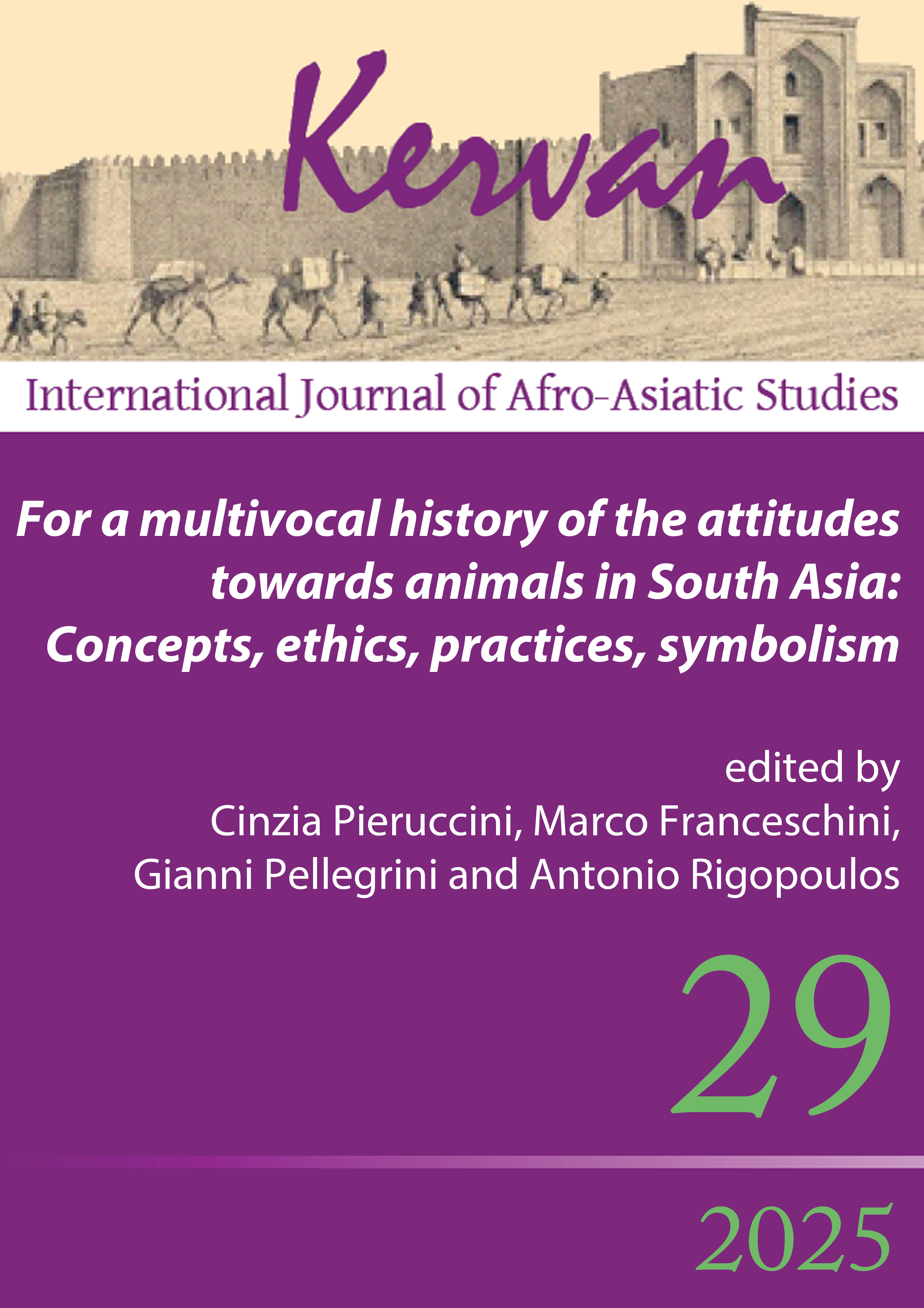Sacrifices gone wrong: Precautions, consequences, damage control
DOI:
https://doi.org/10.13135/1825-263X/12245Abstract
In many cultures, sacrifices are such an important aspect of the social life, that their ratio has been widely scrutinized and subjected to innumerable theories. In my paper I will tackle the problem from the viewpoint of the possible failure of the ritual. All human actions can go wrong, of course, but the failure of a sacrifice can be so dangerous that the rules of its performance constitute no less than an entire science; in ancient Vedic religion, in particular, the sheer amount of texts concerning the exact circumstances, modalities, instruments etc. which must be considered before undertaking the ritual is evidence of the seriousness of the issue and of the fear that something might go wrong. We find very similar concerns in ancient Greek and Latin documents, which confirm that in sacrificial cultures, in spite of their deep differences, the components of the ritual have to be carefully handled in order to avoid catastrophic consequences. In animal sacrifice, of course, a considerable part of the precautions regard how the victims must be handled and killed. As many indologists have argued, it is possible that the notion of ahiṃsā itself arises within this context, as a way of ensuring that, by not "really" harming the animal, its immolation will cause no harm to the sacrificer and, more generally, to the community. My paper will deal respectively with: 1) the precautions to be taken beforehand; 2) the imagined consequences of a failure; 3) the means through which these consequences can be "fixed". The analysis might give some insights about the way in which the Indian sacrificial religion has shaped the relationship between humans and animals, which is, in its turn, a relevant part of the ethical assumptions operating in that part of the world.
Downloads
Downloads
Published
Issue
Section
License
Gli autori che pubblicano su Kervan accettano le seguenti condizioni:
- Gli autori mantengono i diritti sulla loro opera e cedono alla rivista il diritto di prima pubblicazione dell'opera, contemporaneamente licenziata sotto una Licenza Creative Commons - Attribuzione che permette ad altri di condividere l'opera indicando la paternità intellettuale e la prima pubblicazione su questa rivista.
- Gli autori possono aderire ad altri accordi di licenza non esclusiva per la distribuzione della versione dell'opera pubblicata (es. depositarla in un archivio istituzionale o pubblicarla in una monografia), a patto di indicare che la prima pubblicazione è avvenuta su questa rivista.


 The articles that have appeared on Kervan since 2016 are rated as Class A in the system of National Scientific Qualification (ASN, disciplines 10/N1 and 10/N3).
The articles that have appeared on Kervan since 2016 are rated as Class A in the system of National Scientific Qualification (ASN, disciplines 10/N1 and 10/N3). The journal has been approved for inclusion in DOAJ. The DOAJ listing of the journal is available at
The journal has been approved for inclusion in DOAJ. The DOAJ listing of the journal is available at  The journal has been approved for inclusion in ERIH PLUS. The ERIH PLUS listing of the journal is available at
The journal has been approved for inclusion in ERIH PLUS. The ERIH PLUS listing of the journal is available at  Kervan was just accepted for indexing in SCOPUS. This important milestone ensures that articles published in Kervan are easily found when searching for library, archives and Information science and it enables Kervan authors to keep track of how often their article has been cited by others.
Kervan was just accepted for indexing in SCOPUS. This important milestone ensures that articles published in Kervan are easily found when searching for library, archives and Information science and it enables Kervan authors to keep track of how often their article has been cited by others.
